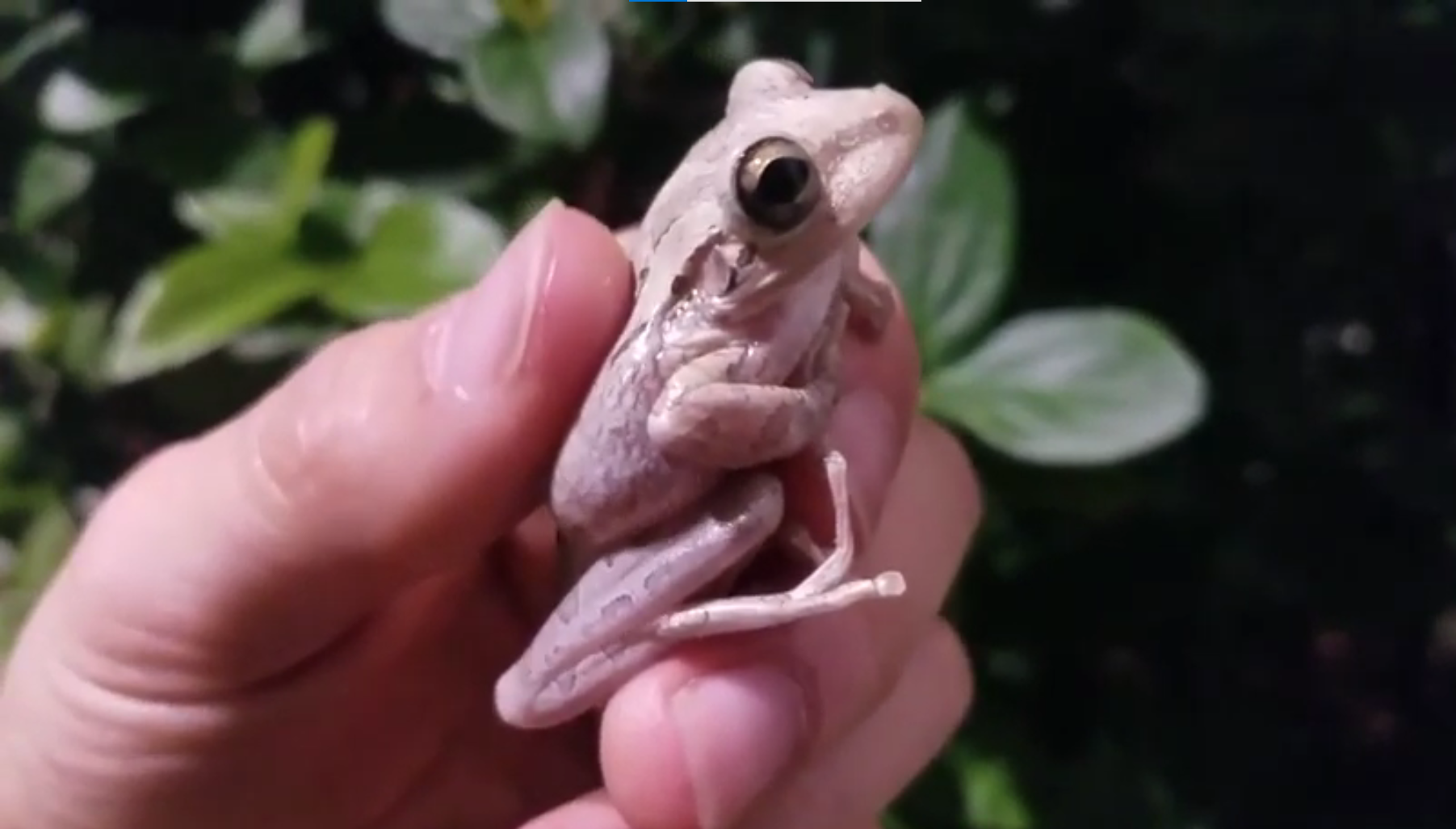Cuban tree frogs in Florida
Because of its sunny and warm climate, Florida is now home to a great number of invasive species, and just one of these is the Cuban tree frog.
An invasive species is one that doesn’t belong there. The Cuban tree frog, for example, originally comes from places such as the Bahamas, Cuba, and also the Cayman Islands. Back in the early twenties, cargo ships were believed to have accidentally brought a few of these frogs across the water, introducing them into Florida.

The climate in Florida, as well as the vast quantity of food on offer, has allowed these non-native species to thrive. Their tadpoles are taking over the spaces that native frog tadpoles would once have inhabited, and there is now even greater competition for food. And, while we're on the subject of food, Cuban tree frogs eat no fewer than 5 different frogs that Are native to North America. These include the squirrel tree frog and the American green frog. As the invasive species thrives, they consume more native species, and this causes those populations to decline. In certain places of Florida, particularly the Everglades, it is believed that the Burmese python could be the reason behind the decline of mammals in the local surroundings. It has even been guessed that only about thirty percent of the original mammal total still survives there.
There is an even bigger problem than damaging the local environment when these Cuban tree frogs come to town, and they’re spreading far and wide too … Found as far as Georgia, they release a mucus that is toxic when they come under attack. If a child were to pick up or touch one of these invasive frogs by mistake, something that can happen around estuaries, small towns, swamps, and small damp forests. If the child has asthma, the reaction could be incredibly dangerous. The toxic mucus can affect the eyes, nose and mouth, causing eye-watering, redness, and difficulty in seeing, and it can cause severe allergic-style reactions, particularly in those with asthma.
What to do if you come across a Cuban tree frog?
You should report the sighting of a Cuban tree frog, if you think you have found one. They are rather small frogs, so often go unnoticed, and generally only grow to about three to six inches in length. It is now considered to be the biggest frog found in North America, which isn't bad for a frog that isn't meant to be there in the first place.
Scientists and experts believe that destroying the animal is the best way to deal with a Cuban tree frog in Florida, or elsewhere in North America, but you will need the teeth-soothing gel, Orajel, in order to get the job done. Once captured, Orajel must be applied to the belly of the little beast. After 15 minutes or so, you are free to drown the animal. The Orajel on the soft skin of the belly is said to anaesthetize it.
Do not touch a Cuban tree frog if you find one, especially if you aren’t wearing gloves. If you can throw something over the little animal, safely confining it, do so but don’t do it if you’re putting yourself in the line of fire. Give the professionals a call, or take a peek online for reporting the sightings of invasive species in Florida.
